Table of Contents
The Studebaker Avanti was marketed as “The World’s Fastest Production Car” when it was released in 1962, thanks to the supercharged version of the vehicle that had just broken 29 world speed records at the Bonneville Salt Flats.
The styling of the Avanti has long divided critics, some love the unusual looks and some loathe it, but multiple groups of diehard enthusiasts managed to keep it in production well into the 2000s – decades after Studebaker went bust.
Fast Facts – The Studebaker Avanti
- The Studebaker Avanti is one of those cars, like the Lotus 7, that simply refused to die after its original automaker ceased its production.
- When it was unveiled with much fanfare in 1962 Studebaker made sure everyone knew that it was designed by Raymond Loewy, that it had a lightweight fiberglass body, and that it had just broken almost 30 world speed records on the salt flats of Bonneville.
- The Avanti was powered by a modified 289 Hawk engine with 240 hp in “R1” naturally aspirated form or 289 in “R2” supercharged form, it had seating for four, and an unusual “bottom breather” front end that did without a traditional grille.
- Due to a multitude of financial issues the Studebaker Avanti would only remain in production from 1962 to 1963 with fewer than 5,800 made in total before the factory was shut down. The tooling and rights to the design would be bought by a pair of Studebaker dealers who would bring the model back into production in 1965.
“Space-Age Motoring” – The Arrival Of The Avanti
Breathless advertisements for the Studebaker Avanti began appearing in magazines in 1962 using phrases like “The Maximum Automobile,” “Space-Age Motoring,” and perhaps most memorably, “The World’s Fastest Production Car.”
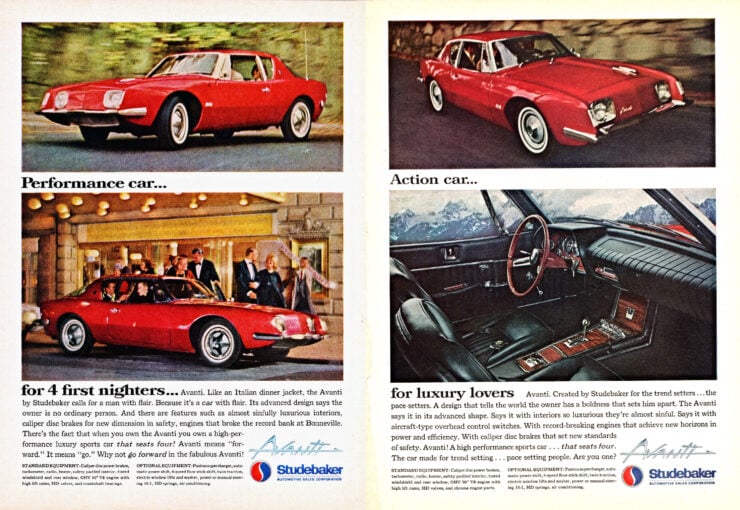

It was clear from the outset that Studebaker were betting their own future on the unusual-looking new four-seater coupe, and they threw everything they had into ensuring it was a success. As it panned out the car itself would become a success, remaining in production decades after Studebaker themselves went out of business.
The styling team for the Avanti was headed up by industrial design legend Raymond Loewy and included Tom Kellogg, Bob Andrews, and John Ebstein– they went from a blank sheet to a completed design in just 40 days.
The team came up with a unique two-door coupe with four seats, a front-engined rear-wheel drive layout, and an usual front end with no grille – it instead used a “bottom breather” intake to get air into the engine bay.
Studebaker Avanti – Specifications
The Avanti was based on a modified version of the Studebaker Lark 109″ convertible chassis and it was given a modified Studebaker 289 Hawk V8 engine mated to either a manual or automatic transmission.
Fiberglass was chosen instead of steel for the body as it would reduce tooling costs and the car’s weight, plus it would draw favorable comparisons with the Corvette which had a body made from the same material.
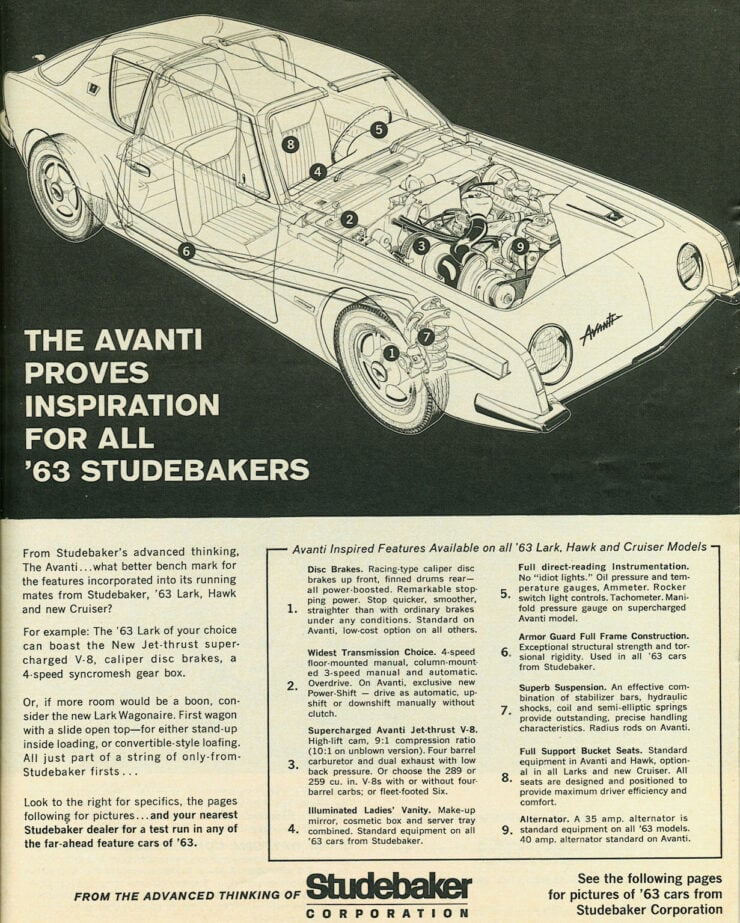

Unusually, a Paxton supercharger was offered as an option on the Avanti, the already powerful 240 hp V8 would be upped to 289 hp with it fitted, and it was a version of this supercharged model that would set the 29 world land speed records at Bonneville.
The Avanti was also given power disc brakes up front with finned drum brakes in the rear, and independent suspension in the front with coil springs and a live axle in the rear on leaf springs – with anti-roll bars front and back.
The curb weight of the car was 3,095 lbs (or 1,404 kgs) and it had similar performance to the Ford Mustang when it was released. Road & Track Magazine managed a 0-62 mph dash in 7.3 seconds onto a top speed of 120 mph in a supercharged R2 Avanti in period.
The Death Of The Avanti – And Its Resurrection
Due to financial issues Studebaker would only build the Avanti from 1962 to 1963 with fewer than 6,000 made. The factory would be closed down and by 1966 Studebaker as an automaker would be no more.
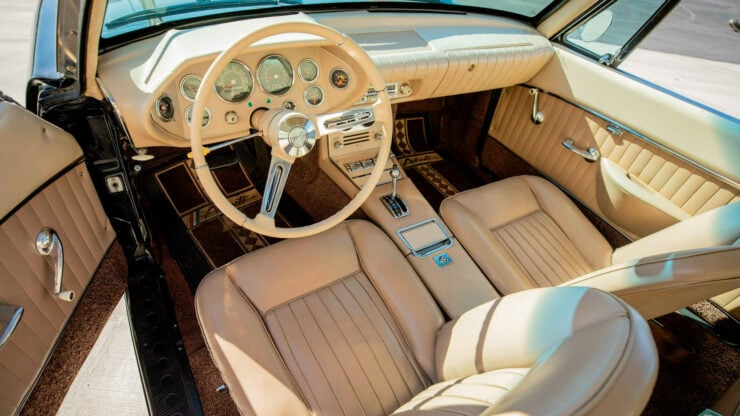

This looked like the end of the road for the Avanti but Studebaker dealers Nate and Arnold Altman and Leo Newman bought the rights and tooling to the design, as well as the factory space, and brought it back from the dead.
They called the car the Avanti II it was initially powered by a Corvette 327 V8 however the engine would change multiple times of the production run. The car would remain in production with a number of major restyles over the years including both convertible and four-door versions, until 2006.
The 1963 Studebaker Avanti R1 Shown Here
The car you see here is an original Studebaker-built Avanti from 1963, the second and final year of production.
It’s finished in glass black with a tasteful cream interior, it has chrome hub caps and bumpers, and it’s powered by the correct 289 cubic inch Studebaker V8 sending power back through an automatic transmission.
This Avanti has 42,336 miles on the odometer and it’s had $2,139.90 USD spent on a recent service for brakes, a new battery, and some other items.
If you’d like to read more about it or register to bid you can visit the listing here, it’s due to roll across the auction block with Mecum in the second week of November.
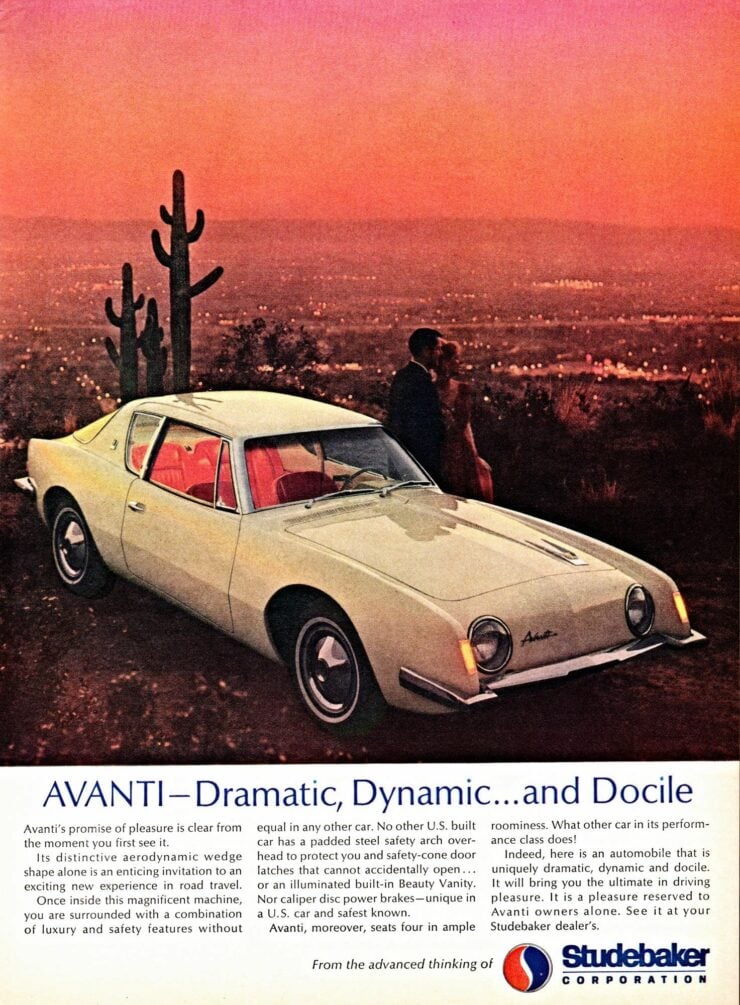
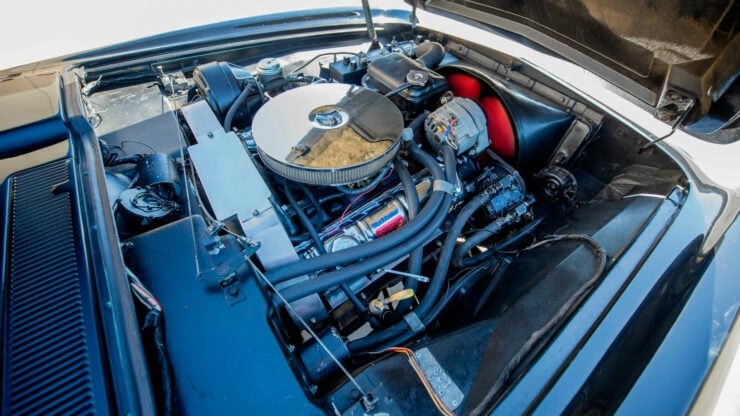
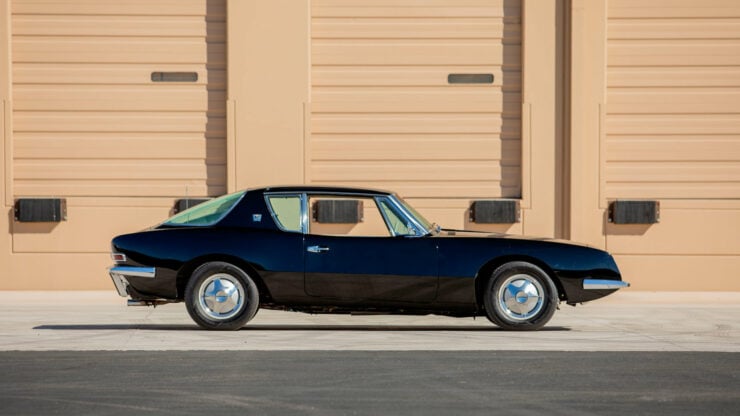
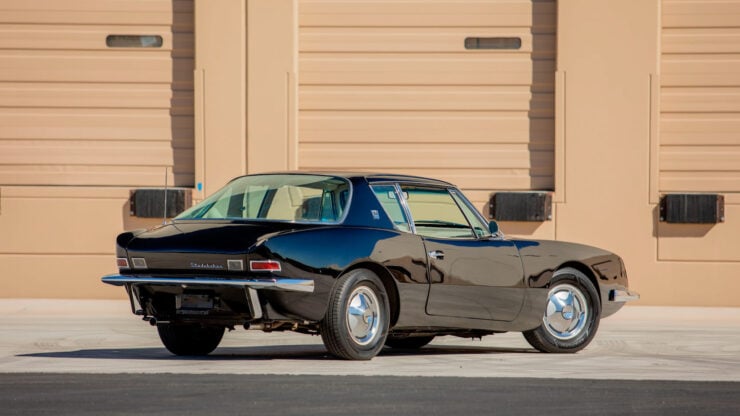
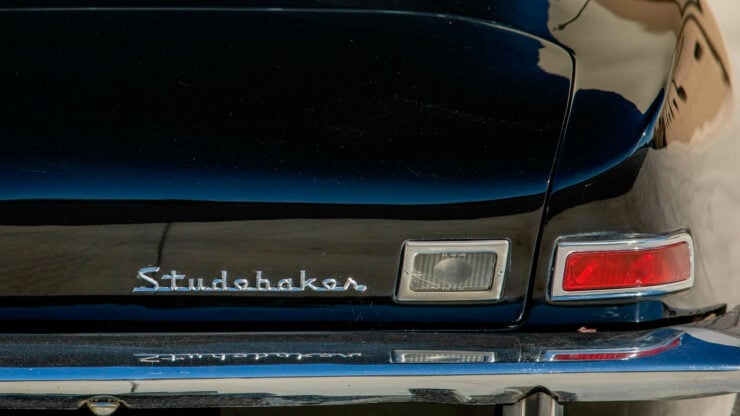
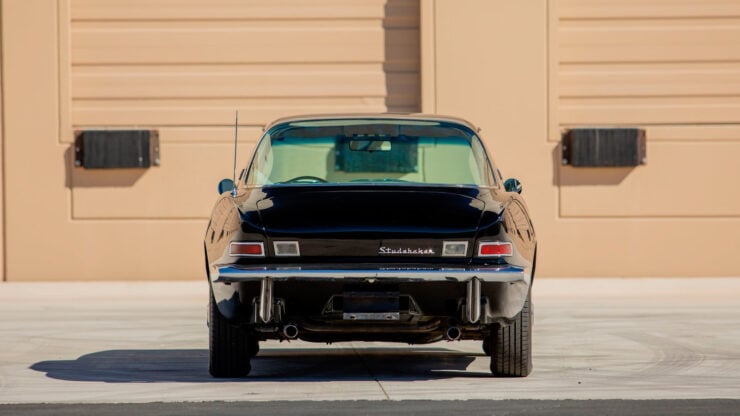
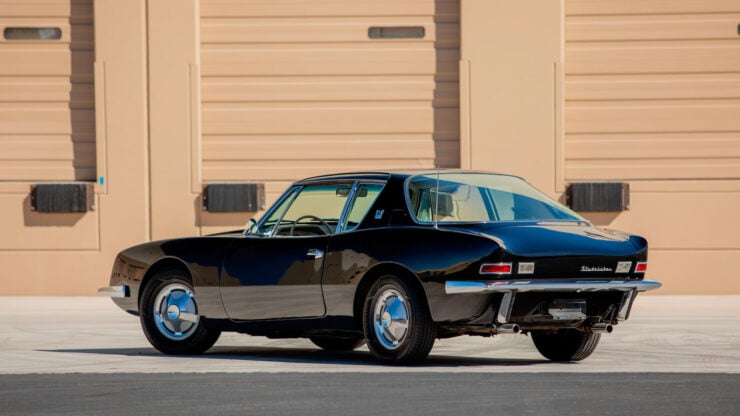
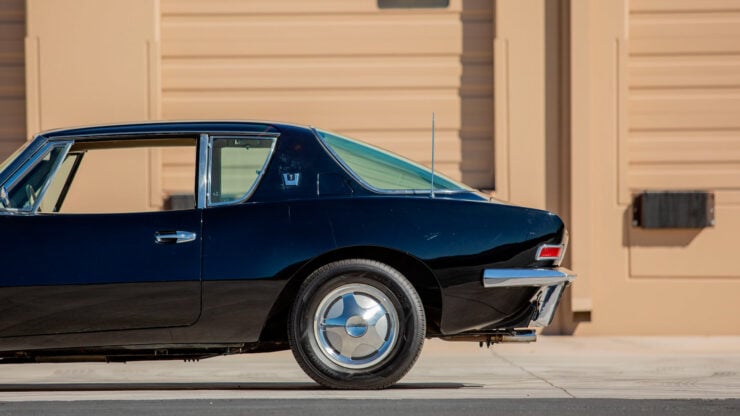
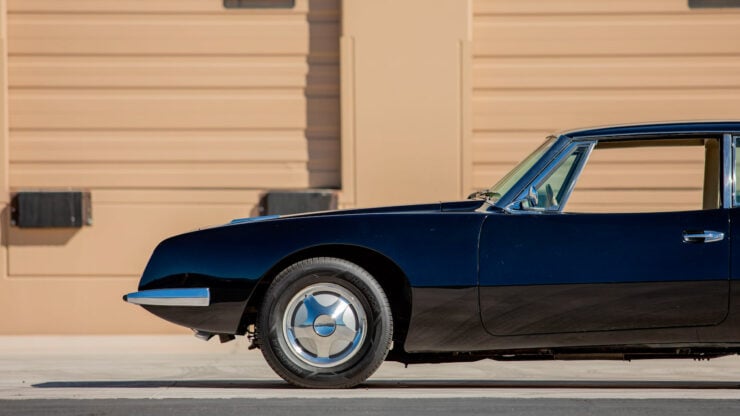
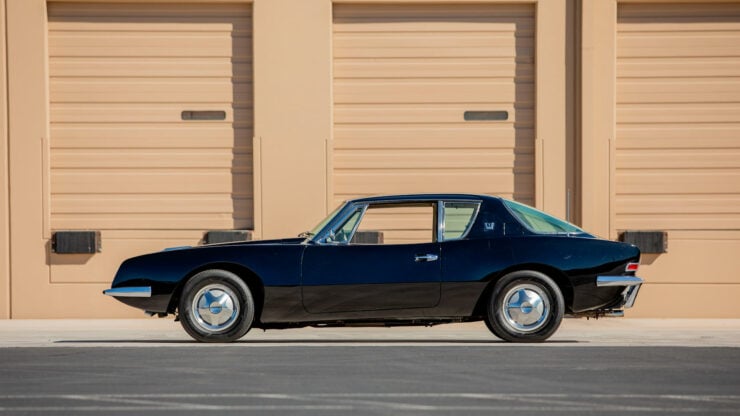
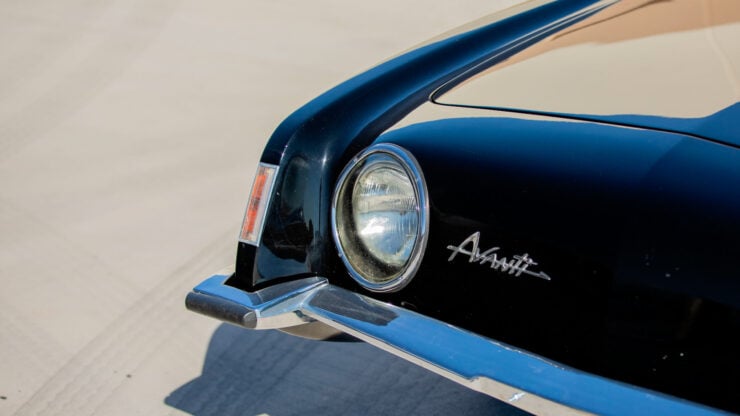
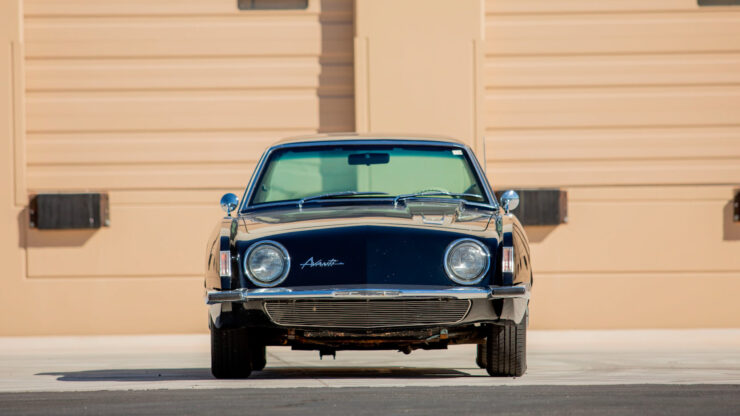
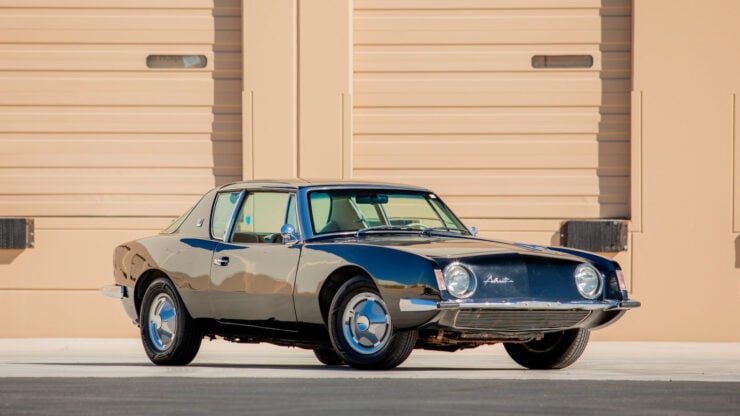
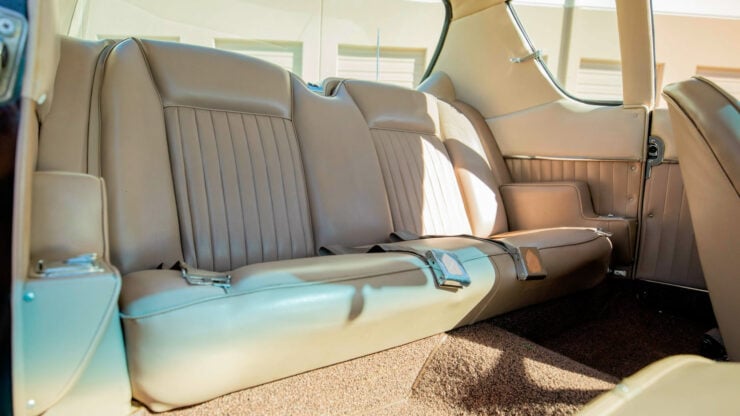
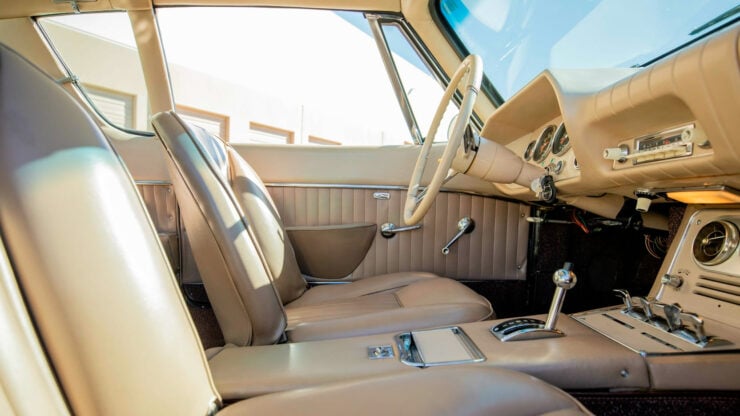
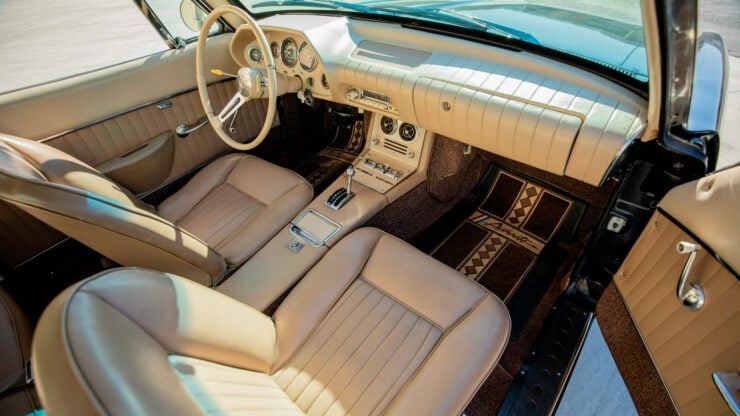
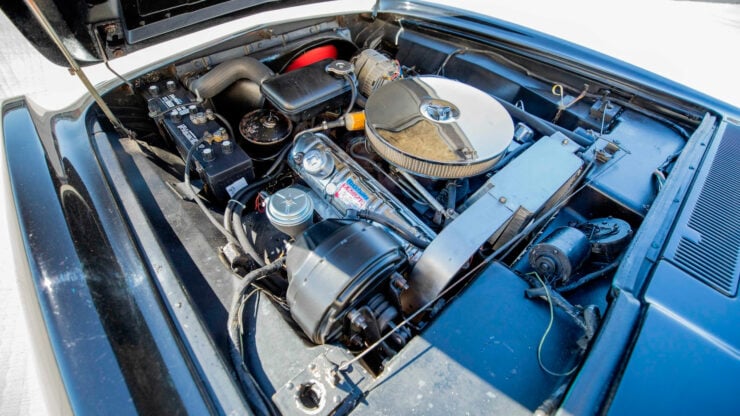
Images courtesy of Mecum
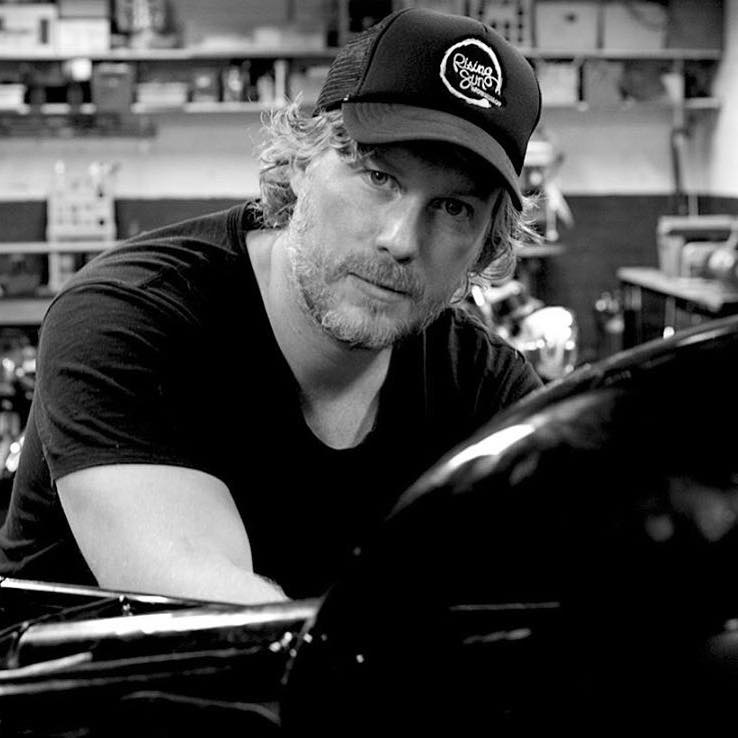
Articles that Ben has written have been covered on CNN, Popular Mechanics, Smithsonian Magazine, Road & Track Magazine, the official Pinterest blog, the official eBay Motors blog, BuzzFeed, Autoweek Magazine, Wired Magazine, Autoblog, Gear Patrol, Jalopnik, The Verge, and many more.
Silodrome was founded by Ben back in 2010, in the years since the site has grown to become a world leader in the alternative and vintage motoring sector, with well over a million monthly readers from around the world and many hundreds of thousands of followers on social media.

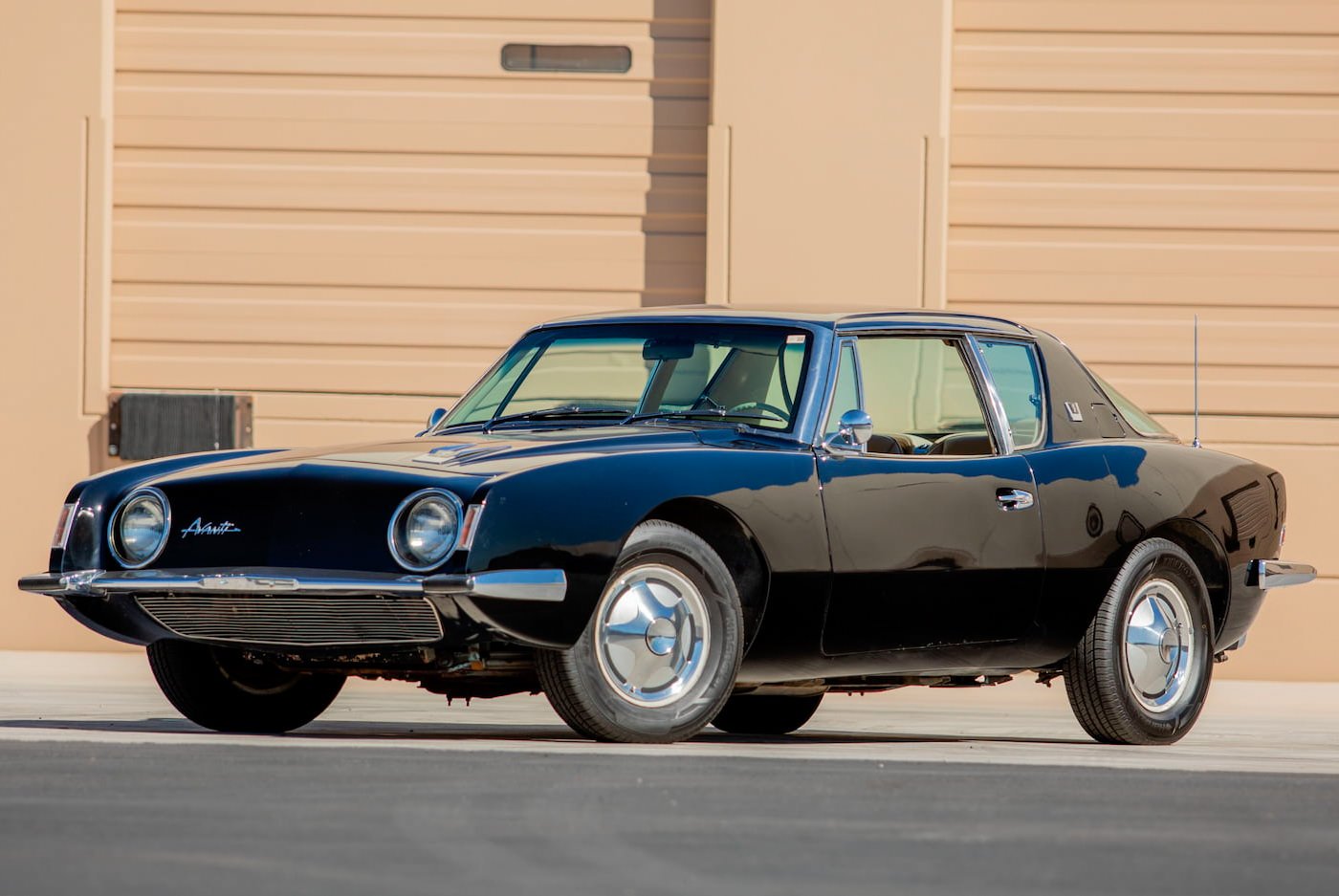




More Stories
Lewis Hamilton Shows Off New Helmet for Monaco GP by Daniel Arsham
Son parte de Star Wars los dos VW ID. Buzz muy especiales, e inspirados en “Obi-Wan Kenobi”
2022 Audi Q5 Sportback Review: Rounding out the top